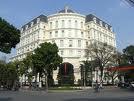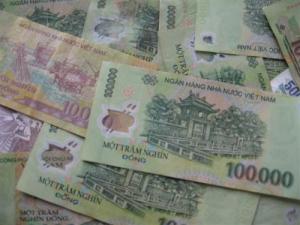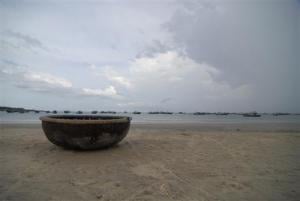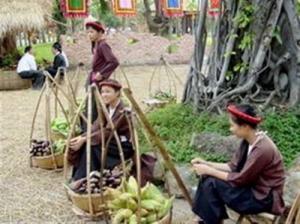Vietnam’s Inflation Slows in July

Vietnam’s inflation makes a surprise dip, in fact for the fourth month now, as food prices eased. The positive trend gave the government some breather on struggling to keep its inflation figures down, at the same time, allowed them room to keep prodding banks to reduce borrowing costs. From the records released by the General Statistics Office, the country’s consumer price index rose only by 0.06 percent in July compared to that of June. That is the lowest rise recorded since March of last year and in most of the country’s biggest cities, commodities’ pricetags are seen stable. Market analysts have attributed this month’s decline in consumer prices to various factors including the falling prices construction materials and petroleum, apart from the curtailed food prices. More so, this month’s inflation rate is at 4.84 percent, with Ho Chi Minh City’s inflation down by 0.09 percent and ${bigcity_Hanoi:"Hanoi"}'s up by 0.25 percent against June. The slowdown resulted from input costs having stabilized and the banks have lowered their interest rates.
Some experts believe that the trend will continue in the coming months. GSO’s records also show that Vietnam’s gross domestic product expanded to 6.4 percent in the second quarter, up from the 5.83 percent during 2010’s initial quarter. With that, experts conclude that for the first half of the year, the country’s economy grew by 6.16 percent - - - a big difference from the 3.87 percent expansion rate from the first 6 months of the previous year. Prime Minister Nguyen Tan Dung’s government is looking at a 6.5 percent growth target for 2010.
He believes that with the figures, there could probably be some scope for the central bank to loosen its monetary policy further. The government urged banks to reduce interest rates to bolster the economy after first-quarter credit expanded by 3.3 percent, compared with the central bank’s full-year target of 25 percent. Calculated Moves Vietnam is expecting this year’s autumn harvest to be good, which could even help in the economy’s positive trend that’s currently taking shape. If inflation is well-contained, exerts are looking at a figure of 9 to 9 percent inflation by year-end.
It could be noted that prices for several rice varieties fell by as much as 0.7% in the week to July 2 and from previous week. With the statistics and the step taken by authorities, some, however fear that the country’s efforts to increase growth over curbing inflation is not a very wise approach considering the low level of foreign reserves and a lack of confidence in the dong as evidenced by the widening trade deficit in June. Besides, many believe that it’s still too early to tell whether the latest inflation figures suggest that interest rates can drop significantly. Indeed, the government is strong in its position on putting the economic stability in top priority but its pro-growth policies could outweigh the needs for managing inflation and external imbalances amid a rigid foreign exchange regime and a relatively low level of foreign exchange reserves.
Records from World Bank show that the country’s reserves fell to $15.2 billion at the end of 2009 from $23 billion in 2008 while the dong has fallen by 3 percent this year. Vietnamese Prime Minister Nguyen Tan Dung last week asked state-owned banks to cut their lending rate . Still the central bank wouldn’t take the recent inflation figures as a signal to loosen monetary policy. Because of the risk and possibilities of affecting the system’s safety, the State Bank of Vietnam will not compromise to allow commercial banks to borrow on the interbank market and re-lend to their customers.
Loans from the beginning of the year to mid-June increased 10.5 percent, helping Vietnam’s economic growth accelerate to 6.4 percent in the second quarter from a year earlier, compared with 5.8 percent in the first three months of 2010. But the state bank is not convinced of the recent figure as a clear trend. Crude oil may not be providing inflation pressure right now, but the GSO itself warns that the approaching storm season could cause an imbalance between demand and supply of rice, leading to higher prices during the remaining months of the year.









